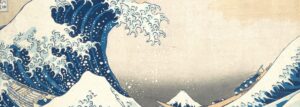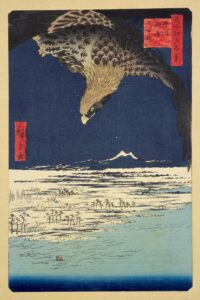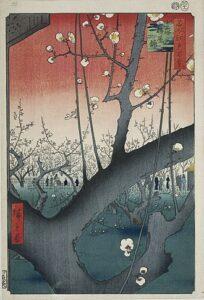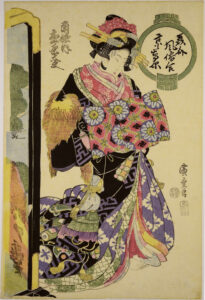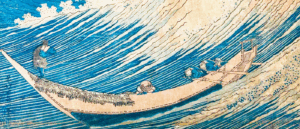Hokusai’s ‘Great Wave’, the most iconic image in Japanese art – is setting some eye popping records at auction. Recently, an early-original Great Wave sold at Christies for a whopping $2.8million. That is almost double the previous sale from 2022, which was $1.5 million. That $1.5million sales was already up around 50%. So, the sales just keep on setting records for Hokusai’s most iconic piece of art. But, what is driving this continued up tick in price?
Hokusai’s Great Wave is one of the most iconic and recognized works of Japanese art, and it continues to set records at auctions for a number of reasons:
- Rarity: The Great Wave is a woodblock print, which means that it was created by carving an image into a wooden block, applying ink to the block, and then pressing the block onto paper. This process resulted in a limited number of prints, and it’s estimated that only a few thousand copies of the Great Wave were made during Hokusai’s lifetime.
- Historical significance: The Great Wave is part of Hokusai’s series of prints titled “Thirty-six Views of Mount Fuji,” which was created during a time when Japan was beginning to open up to the rest of the world after centuries of isolation. The series was a celebration of Japan’s natural beauty and cultural heritage, and it had a significant impact on the Western art world.
- Artistic merit: The Great Wave is a masterpiece of composition, color, and technique. Hokusai’s use of contrasting colors and bold lines create a dynamic and dramatic image that captures the power and beauty of the ocean. It’s a work of art that continues to captivate and inspire people around the world.
- Popularity: The Great Wave has become an icon of Japanese art and culture, and it’s been reproduced in countless forms, from t-shirts to coffee mugs. Its popularity has helped to drive up its value at auctions, as collectors and art enthusiasts seek to own a piece of this iconic artwork.
It is no wonder that Hokusai’s Great Wave is so popular. Hokusai and other Edo-era artists were inspiring the best Impressionists since Japonisme entered Western Europe in the late 19th Century. Van Gogh, Monet, Klimt, and countless others got swept up in the beauty, elegance, and charm of Japonisme style. Kimonos were featured in paintings, objects d’art of Japanese variety, and even paintings were copied of Japanese artists.
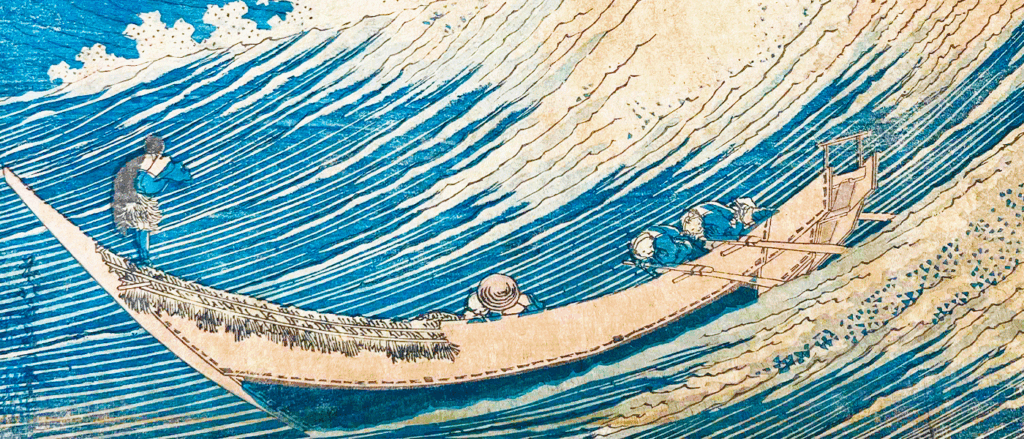 Van Gogh was particularly captivated by Japanese art. Vincent Van Gogh actually copied a number of pieces of Japanese art by Hiroshige (think cherry blossoms, and Edo bridge); and additionally, it is said that Van Gogh gained inspiration for his famous Starry Night (stop by Moma in NYC to see it in person!) by seeing, and possibly owning, one of Hokusa’s famous ‘Great Wave’ prints.
Van Gogh was particularly captivated by Japanese art. Vincent Van Gogh actually copied a number of pieces of Japanese art by Hiroshige (think cherry blossoms, and Edo bridge); and additionally, it is said that Van Gogh gained inspiration for his famous Starry Night (stop by Moma in NYC to see it in person!) by seeing, and possibly owning, one of Hokusa’s famous ‘Great Wave’ prints.
There is no definitive evidence to suggest that Vincent van Gogh copied Hokusai’s “The Great Wave off Kanagawa” or any other specific print by Hokusai in his famous painting “Starry Night.”
However, it’s important to note that Van Gogh was heavily influenced by Japanese art and culture, which was in vogue in Europe at the time of his painting. Japanese prints were widely available and highly sought after by collectors and artists, and Van Gogh was known to have collected and studied them.
The swirling lines and bold colors in “Starry Night” do bear some resemblance to the stylized nature of Japanese art, including Hokusai’s work. Van Gogh himself acknowledged this influence in his letters to his brother, Theo. He wrote, “I envy the Japanese the extreme clarity that everything in their work has. It’s never dull, and never seems to have been made in a hurry.”
So while there may be similarities between Van Gogh’s “Starry Night” and Hokusai’s prints, it’s not accurate to say that Van Gogh directly copied Hokusai or any other specific Japanese artist in the creation of this iconic work of art. Instead, Van Gogh was likely inspired by the unique artistic traditions of Japan and incorporated elements of this style into his own unique vision and style.

To summarize what Van Gogh was likely feeling looking at this great piece of art, we all probably notice similar facets of the Great Wave. Those include the following elements of the vivid nature of the work:
- Bold, contrasting colors: The print uses a limited color palette of blue, white, and black, which creates a high contrast and makes the image more visually striking.
- Dynamic composition: The composition of the print is very dynamic, with the large wave dominating the foreground and the tiny boats and Mt. Fuji in the background. This creates a sense of movement and tension that draws the viewer’s eye.
- Unique perspective: The print uses a unique, low-angle perspective that makes the viewer feel as though they are in the midst of the tumultuous waves. This creates a sense of immediacy and excitement.
- Skillful use of line and texture: The print is composed of many intricate lines and patterns, which create a sense of texture and depth. The lines also convey a sense of movement and energy, particularly in the way they depict the crashing waves.
And so it goes, it seems as one of the top creative geniuses of his day was inspired by Japanese art, that essence continues today with auction prices setting records. Westerners continue to be inspired by the greats of Japanese art, and the woodblock print market continues to thrive. Although, instead of buying a beautiful woodblock print for a price of a cup of noodles, now you might need to shell out a few million dolalrs!
If you have a beautiful woodblock print you would like to sell, please feel free to get in touch with us. Send us photos and we will research it for you, and help you price and sell it. Additionally, check out our new Japanese woodblock print image search. We have the top archive of Japanese woodblock prints in the world – from museums, to archives – we have 300,000 woodblocks to search by. All you need to do is snap a photo of your print and let our search engine do the research for you.


